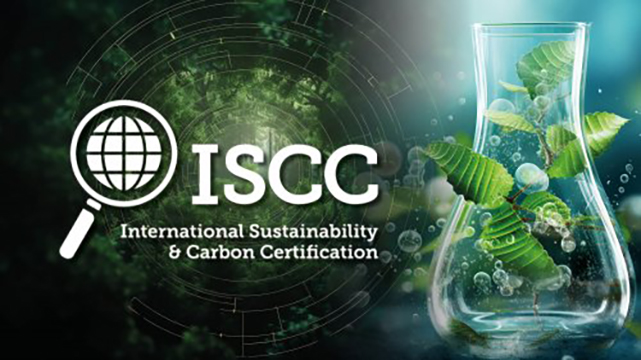More news
- Special report: New UK government and the impact on Britain’s chemical regulations
- Market report: French paint market will weather the storm, say experts
- Market report: India and the South Asia paint and coatings market
- South Africa market report: Paint sales remain steady but new government looks set to boos...
- Market report: Industrial paints in Pakistan

Wax additives are specialised compounds that are designed to enhance the properties and performance of waxes in various applications. These additives are incorporated into wax formulations to modify their characteristics, such as melting point, hardness, flexibility and adhesion.
The global wax additive market is pegged at a value of US$2.78bn in 2023 and is forecasted to increase at a CAGR of 5.4% to reach US$4.7bn by the end of 2033.
Wax additives find extensive use in industries such as cosmetics, where they improve the texture and stability of lipsticks and skincare products. In the automotive sector, wax additives enhance the durability and gloss of car waxes, providing superior protection against environmental factors. Additionally, in the packaging industry, they improve the sealing properties of wax coatings on food containers. Wax additives play a vital role in tailoring waxes to meet specific requirements across diverse end-use sectors.
Wax additive consumption analysis (2018 to 2022) vs market forecasts (2023 to 2033)
- Short Term (2023 to 2026): In the short term, the wax additives market is expected to exhibit steady growth driven by increasing demand from the cosmetics and automotive industries. Cosmetic companies are continually innovating to meet consumer preferences, driving the need for improved wax formulations in products like lipsticks and skincare items.
- Medium Term (2026 to 2029): Demand for advanced wax additives is forecasted to grow as industries increasingly adopt technology-driven solutions. Innovative formulations, with a focus on creating multifunctional additives that offer improved performance and efficiency, are expected to drive market growth during this period. Emerging markets, driven by industrialisation and rising consumer disposable income, are projected to become key growth drivers.
- Long Term (2029 to 2033): Rapid urbanisation and industrialisation in developing regions are projected to drive infrastructure development, boosting demand for construction-related wax additives. Adoption of electric vehicles (EVs) is expected to lead to increased demand for specialized wax coatings for battery components in the global wax market.
How are wax additives aiding paint and ink manufacturers globally?
“Wax Additives Enhancing Anti-blocking and Abrasion-resistant Paints”
In the wax industry, wax additives are used in the formulation of paints and coating materials. The global demand for paints and coating materials is increasing, which is boosting sales of Wax Additives. Wax Additives are used for wood coatings, coil coatings, can coatings, powder coatings, architectural coatings, and other end uses. Wax additivities enhance surface effects in coatings. Wax Additives are beneficial for improving anti-blocking properties, abrasion resistance and scratch properties. It provides a matte appearance and durability to coatings and enhances the quality of powder coatings in various applications. Wax Additives boost the performance of solvent and water-based paints.
“Extensive Wax Additive Use to Improve Solvent Resistance and Dispersion Qualities of Inks”
Wax additives are one of the major key materials used in inks. These additives impart distinct properties to ink, including water and solvent resistance, dispersion qualities and coefficient of friction, which in turn affects friction resistance. Increased production of inks is driving the demand for wax additives. Global demand for inks is increasing due to their growing need in the print media industry, which uses inks for books, newspapers, magazines and publishing media.
Growth of the printing industry in emerging countries due to improving literacy levels is expected to boost the demand for inks and consequently contribute to market growth. For instance, demand for wax additives for ink production is from major ink exporting countries such as Germany (US$2.6bn), Netherlands (US$1.3bn), Japan (US$0.9bn), the United States (US$0.8bn), and the United Kingdom (US$0.7bn). The global ink market was valued at US$17.3bn in 2021 and it is anticipated to reach US$24.1bn by 2031.
READ MORE:
Focus on pigments: Metallic pigments market forecast to reach US$3.4bn by 2033
What are the hindrances that wax additive manufacturers need to tackle?
“Market Growth Impeded by Fluctuations in Raw Material Prices and Import Restrictions”
Prices of wax additives depend on the prices of raw materials used in their production, economic conditions in specific countries and government policies. Wax additives are produced from natural sources such as Montan and carnauba wax and petroleum-based sources such as microcrystalline and paraffin wax. These raw materials are derived from petroleum residues (polypropylene, polyethene and Fischer-Tropsch wax). The fluctuating prices of crude oil affect the final prices of wax additives.
Country-wise insights
Why is the United States Market Lucrative for Wax Additive Manufacturers?
“Growing Emphasis on Sustainability Driving Demand for Eco-friendly Wax Additives”
Demand for wax additives in the United States is expected to rise at a CAGR of 4.9% over the projected period to reach a valuation of US$760.1M by 2033-end.
The wax additive market in the United States is considered lucrative due to several key factors. First and foremost, the United States has a robust industrial sector, including the automotive, construction, and packaging industries, all of which heavily rely on wax additives for various applications. Additionally, the country’s growing emphasis on sustainability has driven the demand for eco-friendly wax additives, as manufacturers seek environmentally responsible solutions.
Why Does China Account for High Use of Wax Additives?
“Rapid Expansion of Construction Industry Driving Substantial Demand for Wax Additives”
The market in China is projected to reach a value of US$1.11bn by the end of 2033. Wax additives are in high demand in China primarily due to its rapid industrialisation and economic growth. China’s booming manufacturing sector, including automotive, textiles, and packaging, relies heavily on wax additives for enhancing product quality and performance.
Category-wise insights
Why are Synthetic Wax Additives in High Demand?
“Greater Cost-efficiency of Synthetic Wax Additives Over Their Natural Equivalents”
Worldwide sales of synthetic wax additives are forecasted to reach US$2.62bn by 2033-end.
Robust demand for synthetic wax additives can be attributed to several key factors. First and foremost, these additives offer a remarkable degree of versatility and performance across various industries. The ability of industrial wax additives to enhance lubrication, moisture resistance and surface finish makes them indispensable in applications such as coatings, plastics and adhesives.
What is leading to the extensive adoption of solid wax additives?
“Industry-recognised Performance Enhancement Characteristics of Solid Wax Additives”
The solid wax additives segments accounts for a market value of US$1.5bn in 2023. Solid wax additives play a pivotal role in enhancing the performance characteristics of final products, thereby fueling demand from manufacturers aiming to enhance their offerings. The reliability and consistency of solid wax additives make them a preferred choice. This expansion not only meets current market needs but also stimulates new opportunities, ultimately shaping and elevating market demand as industries increasingly recognise the value of these additives.
Competitive landscape
Prominent wax additives manufacturers are BYK, Lubrizol, Clariant, BCD Chemie GmbH, Shamrock Technologies, Quality Group, Deurex AG and Deuteron GmbH.
As per the latest market trends, world leading manufacturers of wax additives are focusing on increasing their production capacity. Manufacturers in the wax additive market are currently implementing horizontal integration through acquisitions of companies to increase their market share and expand their core market and growing geographies. Players are focusing on maintaining long-term relationships with raw material providers to easily procure the raw material even in unfavorable conditions.
For more information about the report from Fact.mr, click here







